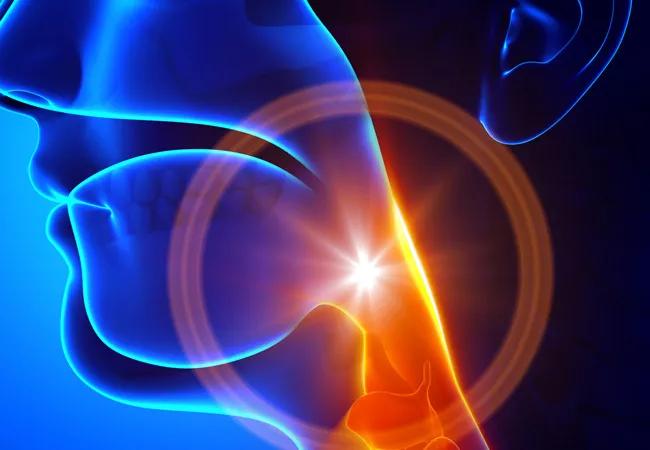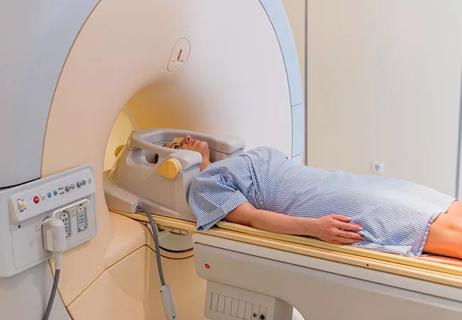Anatomically close, etiologically different cancers

New clinical practice guidelines from the American Society of Clinical Oncology (ASCO) offer a systematic, evidence-based approach to managing the neck in squamous cell carcinomas of the oral cavity and of the oropharynx.
Cleveland Clinic is a non-profit academic medical center. Advertising on our site helps support our mission. We do not endorse non-Cleveland Clinic products or services. Policy
The guidelines address the two types of cancers separately, since they’re etiologically quite different despite their close anatomical proximity. Oral cavity cancer is primarily associated with traditional risk factors such as smoking, chewing tobacco, and alcohol, whereas oropharynx cancer now is mostly due to the epidemic of human papillomavirus (HPV).
The document incorporates the recent emergence of positron emission tomography (PET) for evaluation of the neck.
According to Cleveland Clinic radiation oncologist Shlomo A. Koyfman, MD, co-chair of the guideline writing panel, “There was a need to clarify what should we do with the neck for oropharynx cancer in the era of modern imaging and knowing about HPV, and what should we do for oral cavity cancer, which is kind of a different disease.”
For both cancers, the guidelines address indications for, and hallmarks of, high-quality neck dissections. For oral cavity cancers, the document advises on indications for postoperative radiotherapy or chemotherapy, and whether radiotherapy alone is sufficient or a neck dissection is indicated. And for oropharynx cancer, recommendations cover operative versus nonoperative primary management, and criteria to define an incomplete response to chemoradiation that would warrant a salvage neck dissection.
Developed by a 12-expert panel, the guidelines are based on evidence from 124 relevant studies. The group devised six clinical scenarios — three for each cancer type — and generated recommendations for each one. The intended audience is medical oncologists, radiation oncologists, nurses, speech pathologists, oncology pharmacists and patients.
Previous guidelines have addressed aspects of these cancers, including HPV testing, larynx preservation and radiation therapy, but this document is the first to focus specifically on surgical and nonsurgical management of the neck in both cancers, Dr. Koyfman notes. “It wasn’t as much that a ton of new evidence came out, but that given the changing disease epidemiology and the changing use of PET scanning, we wanted to create a systematic approach for managing them.”
The guidelines are clear, for example, that surgery rather than radiation is the optimal primary mode for initial management of the neck in oral cavity cancer. On the other hand, surgery isn’t the best approach for bulky nodes or bulky neck disease with probable extranodal extension, where radiation and chemotherapy are likely to be necessary afterward.
“Knowing when to choose surgery vs. radiation and how to do it optimally will help people most,” according to Dr. Koyfman.
Another aspect of the document addresses the practice of removing at least 18 nodes, now used as a quality metric for head and neck squamous cell carcinoma surgery due to its association with overall improved survival and lower local-regional failure rates. “The guidelines go over what areas of the neck you should focus on when you do this,” Dr. Koyfman says.
The document is written to be consistent with the recent American Society for Radiation Oncology oropharynx management guidelines that ASCO endorsed within the last year. “So now there are a couple of guidelines that have a consistent message about how to think about what to do with the lymph nodes in the neck, both in terms of treating and following after treatment.”
These guidelines will be quite useful for tumor board meetings, Dr. Koyfman says. “If you just print them out, keep them in clinic, hang them up, bring them to tumor board, they should serve as an important reference to try and help standardize how we approach some of these problems. I think they can give guidance when there might be multiple reasonable things to do, and it might be difficult to choose. This might help you make the most evidence-based recommendation.”

Correlation found between the biomarker HSD3B1 and resistance to combined hormone therapy and radiotherapy

Meta-analysis suggests efficacy and safety

Highlighting top abstracts for the annual radiation oncology conference

Transperineal ultrasound a viable, non-invasive option for monitoring intra-fractional prostate motion

Key abstracts highlight advances in treating locally advanced and refractory disease

Multidisciplinary team to examine radiation therapy combined with immunotherapy

Preoperative treatment ensures successful surgical resection

Modification of traditional staging factors associated with survival in high-risk disease